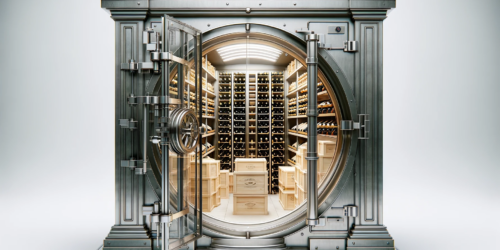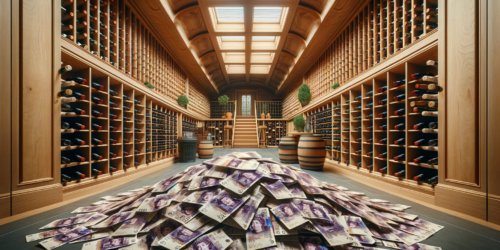A Comprehensive Guide to A Wine Valuation | Uncorking the Mystery

Wine investing, an alluring blend of passion and profit, has captivated connoisseurs and investors alike for decades. It’s a world where the appreciation of fine wine meets the thrill of financial gain, offering a unique avenue for diversifying one’s investment portfolio. Unlike stocks or bonds, wine offers a tangible asset – one that matures exquisitely with time, both in flavor and value.
This article is particularly tailored for a discerning group: investors who have meticulously stored their prized bottles in bonded warehouses. These facilities, revered for their optimal storage conditions, play a pivotal role in preserving and enhancing the wine’s value, making them a cornerstone of serious wine investment.
The essence of this guide is to navigate the intricate process of valuing these liquid assets. For many investors, their collections represent more than just rows of neatly labeled bottles; they are a carefully curated selection of history, culture, and personal taste. However, the ultimate question lingers – what is their collection truly worth in today’s market? This article aims to demystify that question. Whether you are considering an update on your collection’s current market standing or contemplating a sale, understanding the value of your investment is crucial.
We delve into the factors that determine a wine’s worth – from the critical aspects of vintage and rarity to the impact of market trends and global events. Additionally, we will explore the practicalities of transforming your collection into liquidity. This includes when to sell, where to sell, and the intricacies of navigating the legal and tax implications of such a transaction.
Embark on this journey with us as we uncork the secrets of wine valuation. Whether you’re a seasoned investor or new to the cellar, this article promises to enrich your understanding and equip you with the knowledge to make informed decisions about your prized wine collection.
Understanding the Basics of Wine Investment
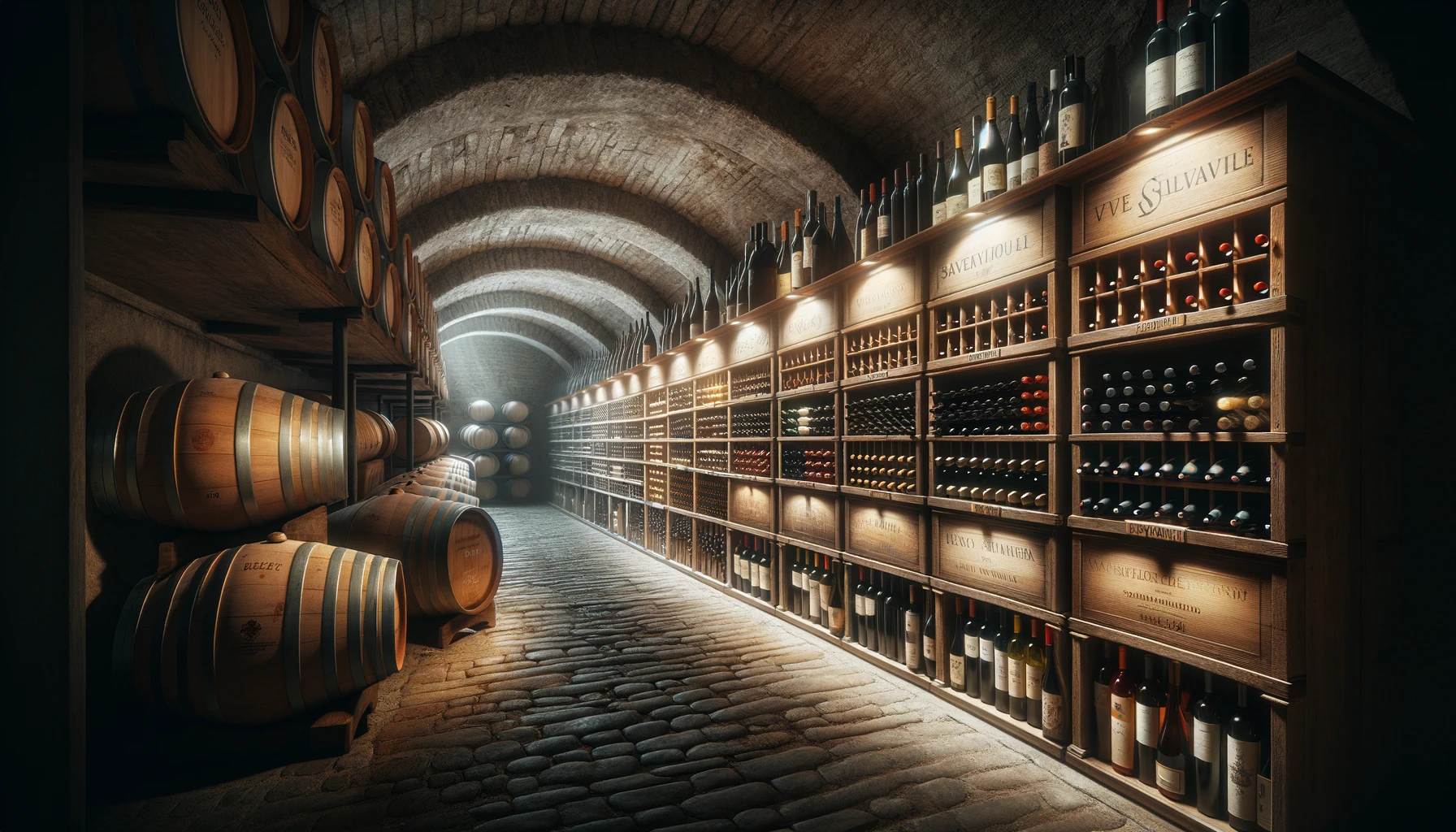
Wine investment (see our guide to wine investing here) is a fascinating blend of art and science, appealing to those who appreciate the finer things in life while seeking substantial financial returns. Unlike traditional investments in stocks or real estate, wine investment offers a unique opportunity to delve into a world where passion meets profit. It’s about acquiring bottles or cases of fine wines with the intention of selling them at a higher price as they age and become rarer.
The cornerstone of wine investment lies in the inherent qualities of the wine itself. Fine wines, particularly those from renowned regions and prestigious vintages, have a track record of increasing in value over time. This appreciation is due to several factors. Firstly, as wine ages, its flavors and complexities evolve, often leading to a more desirable and valuable product. Secondly, the scarcity factor plays a significant role. As bottles from a vintage are consumed over time, the remaining bottles become rarer, thus driving up their value.
However, wine investment isn’t simply about buying bottles and waiting for them to appreciate. The storage of these wines is crucial, and this is where bonded warehouses come into play. Bonded warehouses are specialized storage facilities where wines can be kept under optimal conditions – controlled temperature, humidity, and light – to ensure their quality and value are preserved. These warehouses are also secure, providing a safe haven from theft or damage, which are significant risks in wine investment.
Another critical aspect of bonded warehouses is their tax-efficient nature. In many jurisdictions, wines stored in these facilities are not subject to duties and taxes until they are removed or sold, making them an attractive option for investors. This arrangement allows for more flexibility in managing the investment, as the investor can decide to sell the wine while it’s still in the warehouse, potentially reducing the tax burden.
As for the appreciation of wine values over time, it’s a nuanced process influenced by several factors. The brand and reputation of the vineyard, the quality of the specific vintage, and the wine’s provenance (its history of ownership and storage) are paramount. Additionally, market demand plays a significant role. For instance, wines from regions that suddenly gain popularity can see a significant increase in value.
Investment-grade wines typically follow a predictable maturation curve. Young wines might not be highly valued immediately after release, but as they mature and enter their optimum drinking window, their value can increase significantly. The peak of this curve is the optimal time for sale, but this requires careful monitoring and understanding of the wine market trends.
It’s also important to note that wine investment is not a short-term endeavor. It requires patience, as the maturation process can take years, if not decades. The market for fine wines is also subject to fluctuations, influenced by global economic conditions, changing consumer tastes, and even climatic changes that affect wine production.
Factors Influencing the Value of Your Wine
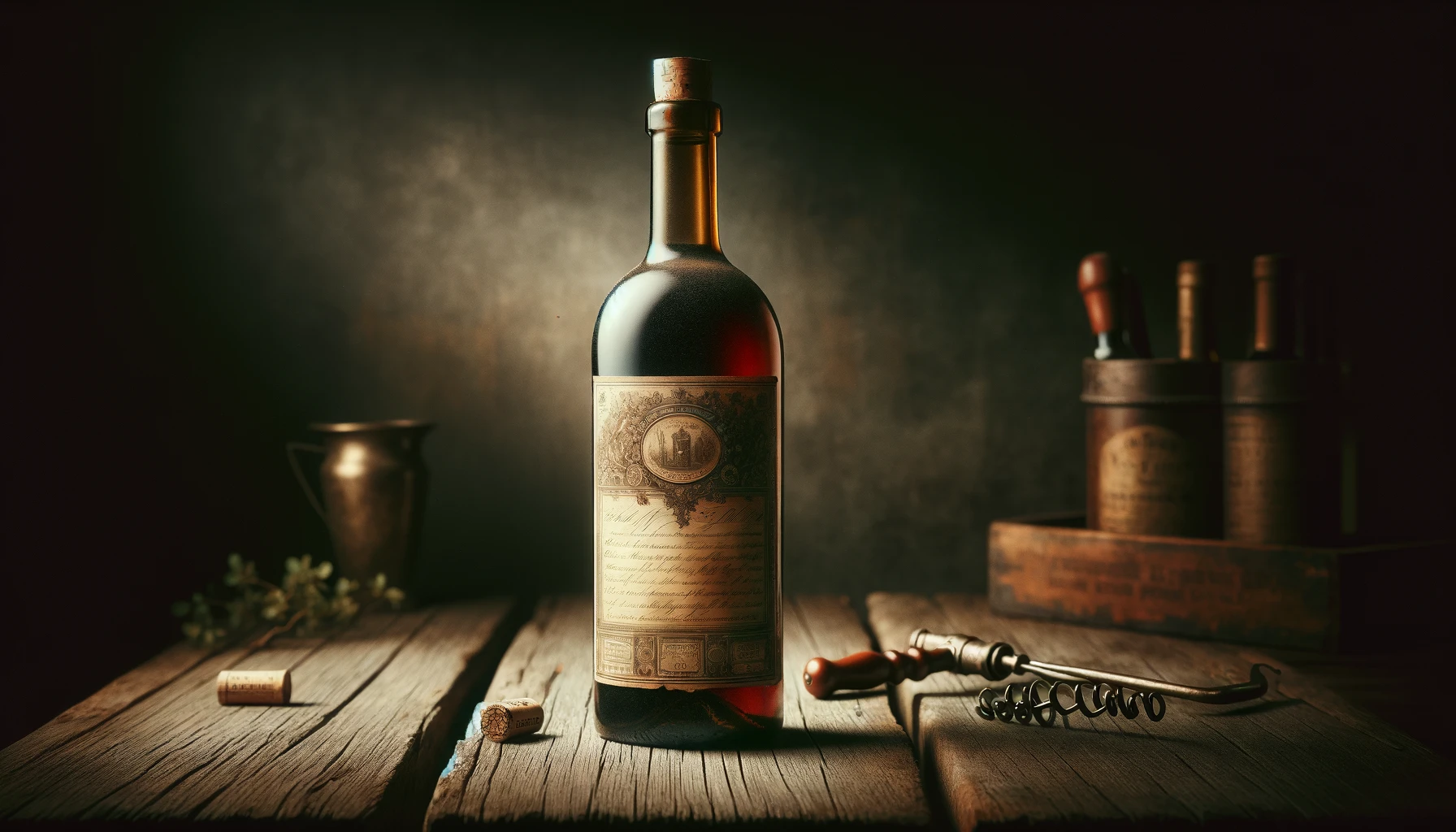
The value of a wine collection is not just a reflection of the liquid in the bottles; it’s a complex interplay of various factors that wine investors must carefully consider. Among these, age and vintage, rarity and demand, and provenance and storage conditions stand out as key determinants in the valuation of fine wines.
Age and Vintage: The age of a wine and the year it was produced, known as the vintage, are critical factors in determining its value. Generally, fine wines improve with age, developing a more complex and refined taste profile that is highly sought after. However, not all wines are meant to age long-term. The vintage year also plays a crucial role, as it reflects the weather conditions and overall climate during the grape growing and harvesting period. For example, a wine from a year with ideal weather conditions that produced exceptional grapes is likely to be more valuable than a wine from a less favorable year. Thus, a vintage’s reputation can significantly impact the price and demand for wines from that year.
Rarity and Demand: The basic economic principle of supply and demand is a powerful driver in wine valuation. Wines that are rare, either because they were produced in limited quantities or because most of the production has already been consumed, can command high prices. This rarity factor is often linked with the wine’s popularity and reputation. For instance, wines from renowned vineyards or those that have won prestigious awards tend to be more sought after, pushing their value up. Moreover, certain wine regions or styles may come into fashion, temporarily inflating prices due to increased demand.
Provenance and Storage Conditions: The history and storage conditions of a wine are collectively known as its provenance. A well-documented provenance, assuring the wine’s authenticity and proper handling, can significantly enhance its value. This is where the role of bonded warehouses comes into play. These specialized storage facilities ensure optimal conditions for wine aging – controlled temperature, humidity, and minimal light exposure. Proper storage not only maintains the wine’s quality but can also improve it over time, thereby increasing its value. Wines stored in bonded warehouses are also less likely to be subjected to fraudulent practices, adding an extra layer of trust for potential buyers.
Assessing the Current Market for Wine
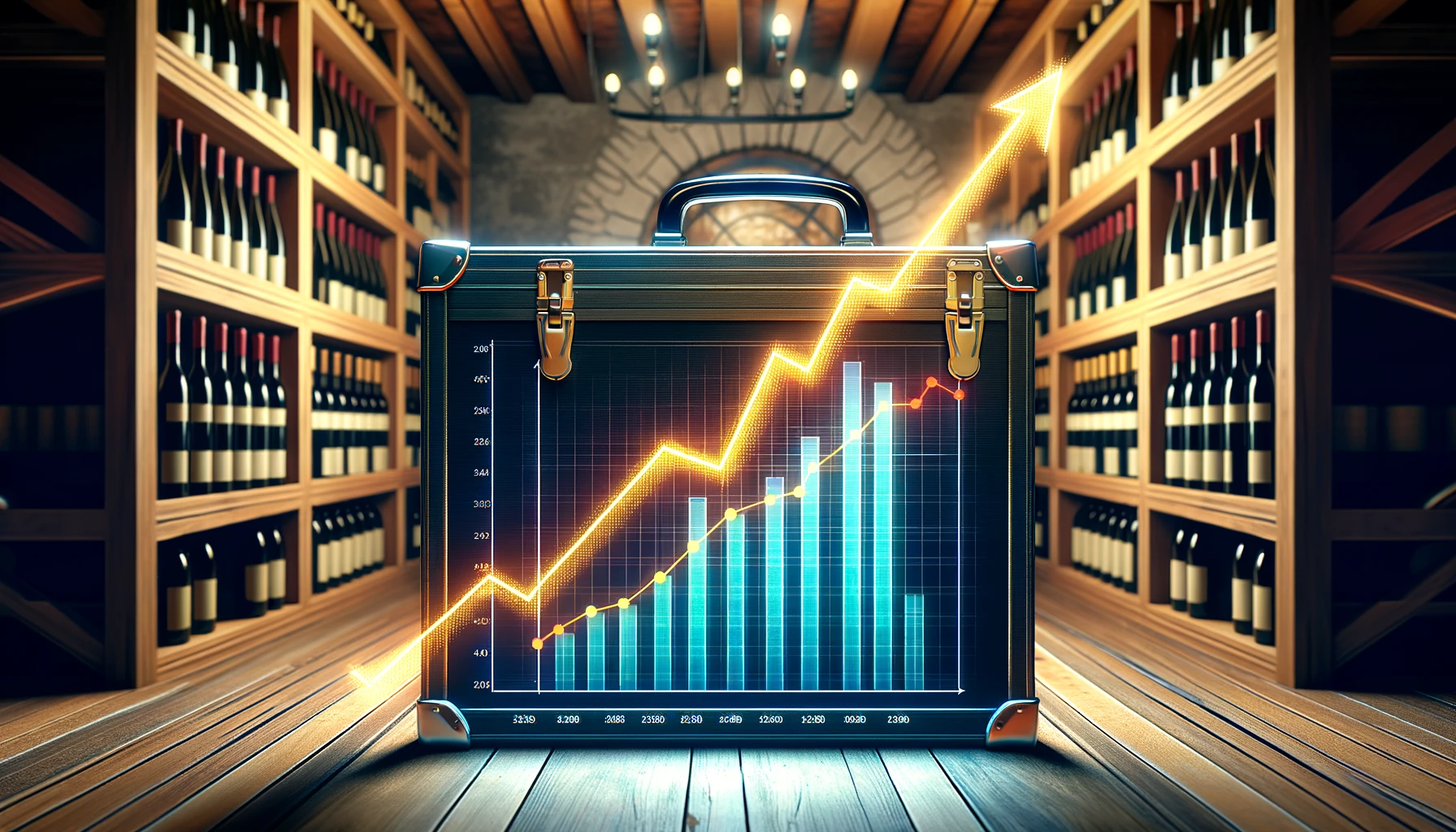
In the dynamic world of wine investment, staying abreast of the current market trends, understanding regional preferences, and recognizing the impact of global events are essential for making informed decisions. This section explores these aspects, offering insights into the multifaceted nature of wine investment.
Trends in Wine Investment: The wine market, much like any other, is subject to trends that can significantly influence investment decisions. Recently, there has been a growing interest in sustainable and organic wines, reflecting a broader consumer shift towards environmentally friendly products. This trend is not only changing the types of wines that are in demand but also influencing the practices of vineyards and producers. Additionally, technology is playing a more prominent role, with blockchain being used to ensure the authenticity and traceability of fine wines, adding to their value. Another notable trend is the increasing popularity of wines from emerging regions, which are starting to compete with traditional strongholds in terms of quality and investment potential.
Key Markets and Their Preferences: When it comes to wine investment, certain regions have long been at the forefront. Bordeaux and Burgundy in France are prime examples, known for their prestigious vineyards and highly sought-after wines. These regions have a long-standing reputation for producing wines that not only age gracefully but also appreciate significantly in value. In addition to France, Italy, with its renowned Tuscany and Piedmont regions, and Spain, particularly the Rioja area, are also key players in the wine investment market. New World wines, especially from regions like Napa Valley in the United States, Australia’s Barossa Valley, and Chile’s Maipo Valley, have been gaining traction and recognition, offering exciting opportunities for investors.
Impact of Global Events: The wine market is not immune to the effects of global events. Economic shifts, such as recessions or booms, can influence consumer spending power and demand for luxury goods, including fine wines. Furthermore, climate change poses a significant challenge, as changing weather patterns can impact grape yields and quality, thus affecting wine production and prices. Political events, trade policies, and even pandemics can also have a profound effect. For instance, tariffs on imported wines can shift demand and prices in various markets, while global crises, like the COVID-19 pandemic, have disrupted supply chains and altered consumer buying habits.
Tools and Resources for Wine Valuation

Valuing a wine collection accurately is a nuanced process, requiring access to the right tools and expertise. From leveraging online valuation tools to consulting with wine experts and analyzing auction data, various resources can guide investors in understanding the worth of their prized collections.
Online Wine Valuation Tools: Numerous online platforms offer valuable resources for estimating the value of wine. Websites like Wine-Searcher and CellarTracker provide extensive databases where users can search for specific wines and view current market prices, which are aggregated from various global sources. Another popular tool is Vinfolio, which not only provides valuation information but also offers insights into buying and selling wines. Liv-ex (The London International Vintners Exchange) is a more advanced platform, particularly useful for those with extensive collections; it offers detailed market analysis, price tracking, and trend reports. These tools are invaluable for getting a quick, ballpark estimate of a wine’s value, though they should be used as part of a broader valuation strategy.
Consulting with Wine Experts: While online tools provide a good starting point, consulting with wine experts can offer more personalized and precise valuations. Wine appraisers, sommeliers, and merchants possess in-depth knowledge of the wine market and can provide valuations based on not just the wine itself, but also its provenance and condition. They can also offer advice on when might be the best time to sell or whether to hold onto certain bottles for longer. For serious investors, building a relationship with a trusted wine expert is invaluable for navigating the complexities of the wine market.
Wine Auctions and Sales Data: Analyzing past sales data from wine auctions can provide insights into how certain wines are valued in the open market. Auction houses like Sotheby’s and Christie’s regularly publish results of their wine auctions, which can be a useful resource for understanding current market trends and prices. Websites like Wine Market Journal compile auction data, offering comprehensive analysis on wine sales trends. Reviewing this data helps investors understand not just the value of their wines, but also how market preferences and demand are changing over time.
Preparing to Sell Your Wine Collection
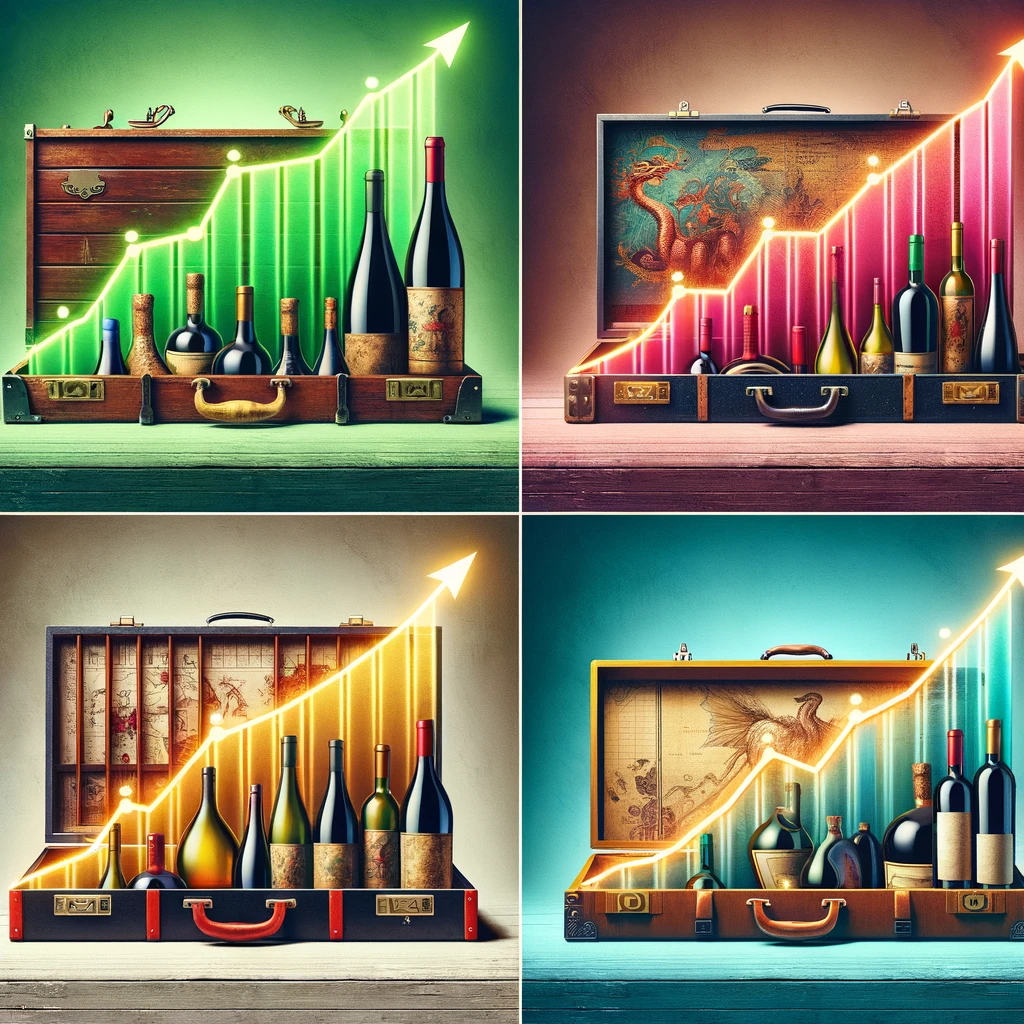
Deciding to sell a wine collection is a significant decision for any investor. This process involves understanding the optimal timing for sale, exploring various selling options, and being aware of the legal and tax implications. Each aspect plays a crucial role in maximizing returns and ensuring a smooth transaction.
When to Sell: Best Time or Conditions for Selling
The decision of when to sell wine hinges on a variety of factors including market conditions, the maturity of the wine, and personal financial needs. Generally, the best time to sell is when the wine has reached its peak maturity and is in demand in the market. This requires a keen understanding of the wine’s aging potential and market trends. For instance, selling a wine too early might mean missing out on potential value gains, while selling too late could result in diminishing returns if the wine is past its prime. Monitoring market trends and seeking advice from experts can help determine the best window for selling.
Selling Options: Auctions, Private Sales, or Wine Brokers

There are several avenues through which one can sell wine, each with its own set of advantages. Wine auctions, either online or at traditional auction houses like Sotheby’s or Christie’s, are popular for their wide reach and the potential to attract high bids from serious collectors. Private sales, either directly to another collector or through a wine club, offer more control over the sale process and pricing, although they may require more effort in terms of marketing and negotiation. Wine brokers or merchants act as intermediaries, leveraging their network and expertise to sell the wine, typically in exchange for a commission. The choice of selling method depends on the size of the collection, the value of the wines, and the seller’s preference in terms of speed and convenience.
Legal and Tax Considerations
Selling a wine collection can have legal and tax implications that should not be overlooked. The legal aspects include ensuring the authenticity and ownership of the wine, as well as compliance with local and international laws regarding the sale and shipment of alcohol. Tax implications vary by country and region, but generally, profits from the sale of wine are subject to capital gains tax. It’s essential to consult with a legal and tax expert to understand these implications fully and to plan accordingly. Proper documentation and record-keeping are crucial for a seamless process and to meet regulatory requirements.
In summary, preparing to sell a wine collection requires careful consideration of the timing, choosing the right selling platform, and understanding the legal and tax implications. This preparation, combined with a thorough knowledge of the market and professional advice, can significantly enhance the chances of a successful and profitable sale.
Case Studies – Successful Wine Investments
Examining successful wine investments provides invaluable insights into the strategies and decisions that can lead to substantial returns. These case studies highlight the importance of factors such as choice of wine, timing of sale, and market conditions.
Case Study 1: The Bordeaux Triumph
One of the most notable success stories in wine investment involves Bordeaux wines. A collector invested in a case of Château Lafite Rothschild 1982, a renowned Bordeaux wine, in the early 2000s for approximately $15,000. Over the years, this vintage gained legendary status, acclaimed for its exceptional quality and aging potential. By 2010, the value of this case had skyrocketed, selling at auction for over $50,000. This investment was successful due to the collector’s choice of a highly reputable wine known for its excellent aging capability and the decision to sell when the market for Bordeaux wines was peaking.
Case Study 2: The Burgundy Boom
Another remarkable example is an investment in the Burgundy region, specifically in the wines of Domaine de la Romanée-Conti (DRC). DRC is famous for its limited production and exceptional quality. An investor purchased several cases of various vintages in the late 1990s. Over the next two decades, the demand for top-tier Burgundy wines surged, driven by growing interest from Asian markets. In 2018, the investor sold part of this collection at an auction, realizing a return of over 300%. This case underscores the importance of investing in wines from prestigious producers with limited availability, combined with the patience to wait for the right moment to sell.
Case Study 3: The New World Wonder
A different type of success story comes from the New World, particularly from Napa Valley in California. A savvy investor focused on cult Cabernet Sauvignon wines from producers like Screaming Eagle and Harlan Estate in the early 2000s. These wines were gaining a reputation for their quality, rivaling that of their Old World counterparts. Capitalizing on the rising popularity and the scarcity of these wines, the investor sold them after a decade, yielding significant profits. This investment highlights the potential of emerging regions and the benefit of recognizing and acting on shifting market trends.
These case studies demonstrate that successful wine investment often involves a combination of selecting high-quality wines with potential for appreciation, understanding the dynamics of the wine market, and timing the sale to coincide with peak demand. They also show the diversity of investment strategies, from traditional Old World wines to emerging New World producers, offering multiple pathways to success in the wine investment landscape.
Common Mistakes to Avoid in Wine Investing
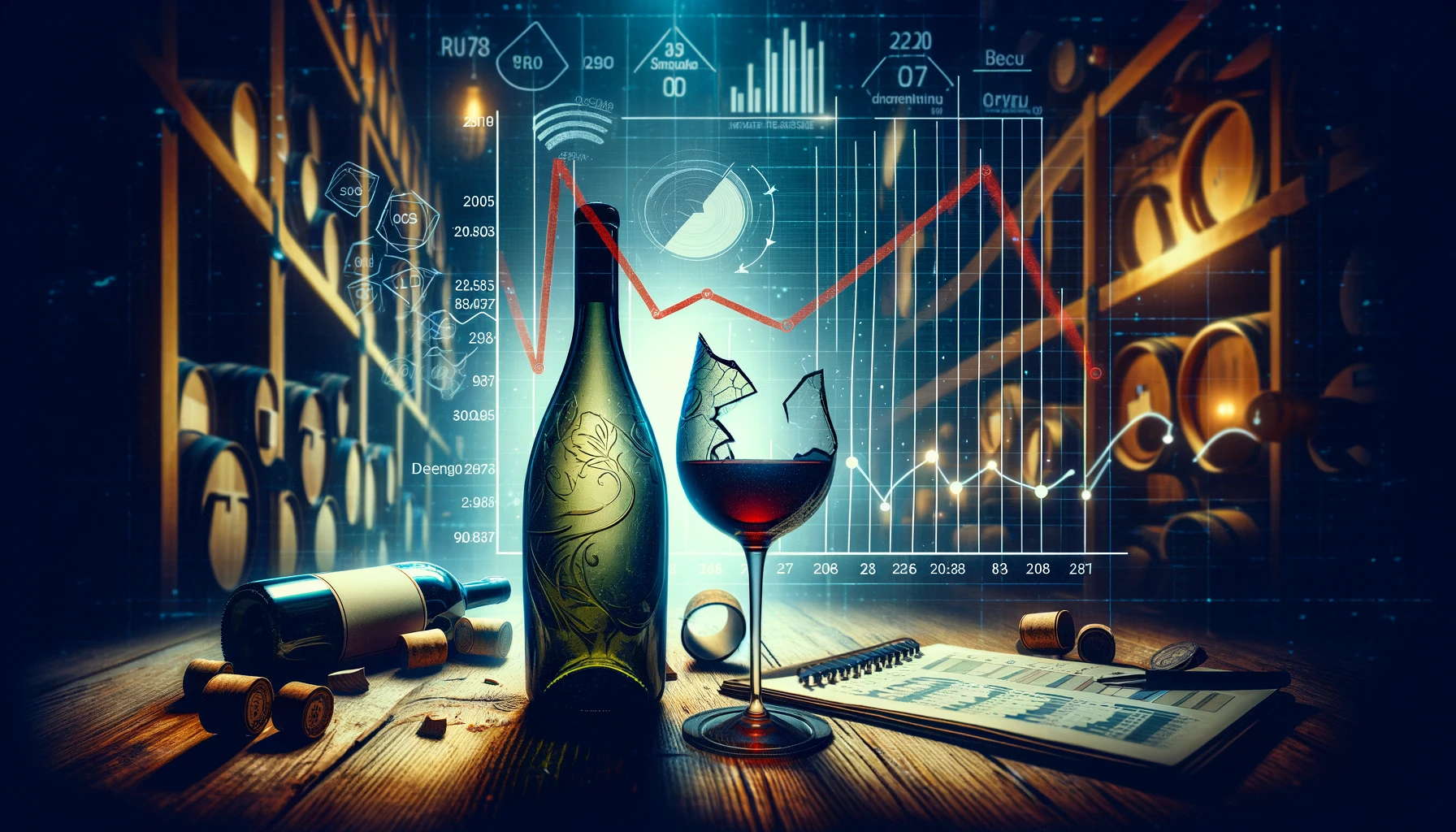
Wine investing, while potentially lucrative, is fraught with pitfalls that can easily undermine its success. Awareness of these common mistakes is crucial for both novice and experienced investors to protect their investments and maximize potential returns.
Investing in the Wrong Vintage: One of the most common errors is investing in wines from vintages that are not highly regarded. Not all years produce wines that age well or increase in value. For instance, a Bordeaux from an off-year will not appreciate as much as one from a celebrated vintage, even if it comes from the same vineyard. Thorough research and knowledge of wine vintages are essential to making informed investment decisions.
Poor Storage Conditions: The way wine is stored significantly impacts its quality and, consequently, its value. Inadequate storage conditions, such as incorrect temperature, humidity, or exposure to light, can lead to wine spoilage. Investing in professional storage, like bonded warehouses, ensures that the wine maintains its quality and authenticity, which are critical for resale value.
Lack of Diversification: As with any investment, putting all your eggs in one basket is risky. Some investors make the mistake of focusing too narrowly on a single region, producer, or type of wine. Diversification across different wines and regions can mitigate risks associated with market fluctuations and changing consumer preferences.
Ignoring Market Trends and Consumer Preferences: The wine market is dynamic, with shifting trends and tastes. Failure to stay informed about these changes can lead to missed opportunities or holding onto wines that are declining in popularity. Successful investors keep a pulse on the market, understanding current trends and future projections.
Overlooking Provenance and Authenticity: The history and authenticity of a wine are vital to its value. Purchasing wines without a verified provenance or from unreliable sources can lead to investments in counterfeit or improperly stored wines, which are worthless in the market. Ensuring the authenticity and proper documentation of wines before purchasing is crucial.
Impulse Buying Based on Hype: Sometimes, investors might be tempted to buy wines based on hype or because they are currently popular without considering their long-term value. This can result in acquiring wines that do not age well or lose their popularity, making them difficult to sell at a profit later.
Neglecting Exit Strategy: Not having a clear exit strategy is a common oversight. Knowing when and how to sell is as important as knowing what to buy. This involves understanding the best channels for selling (auctions, private sales, brokers) and the timing of the sale to maximize profits.
The Future of Wine Investing

Speculating about the future of wine investing involves considering evolving market trends, technological advancements, and changing consumer preferences. While the core principles of wine investing might remain constant, the landscape is dynamic, poised for exciting developments in the years ahead.
Emerging Regions and Varietals: Traditional strongholds like Bordeaux, Burgundy, and Tuscany will likely maintain their status in the wine investment world. However, emerging wine regions are gaining prominence. Places like South Africa, New Zealand, and even parts of China are producing high-quality wines that are starting to attract investor attention. Additionally, there’s a growing interest in lesser-known varietals, providing a broader range of investment opportunities beyond the classic Cabernet Sauvignon and Pinot Noir.
Impact of Climate Change: Climate change is a critical factor that will increasingly influence wine investment. Changing weather patterns are affecting traditional wine-growing regions, potentially altering the taste and quality of the wines produced there. This could lead to shifts in the regions and types of wines that are considered valuable for investment.
Technology’s Role: Advances in technology are set to play a significant role in wine investment. From blockchain for wine authentication and provenance tracking to sophisticated wine storage solutions, technology will provide more tools for investors to manage and safeguard their collections. Online platforms and apps are likely to become even more integral in providing market data and facilitating wine trading.
Sustainable and Organic Wines: As consumer preferences evolve, there’s a growing demand for sustainable, organic, and biodynamic wines. This shift could influence wine production practices and create new niches for investment, with eco-conscious wines possibly fetching premium prices.
Diversification of Investors: The demographic of wine investors is diversifying. Younger investors and those from emerging economies are entering the market, bringing new perspectives and preferences. This could lead to a more varied and vibrant wine investment landscape.
Ongoing Education and Market Awareness: In this ever-changing environment, continuous education and staying informed are vital. Investors should keep abreast of global economic trends, climate change impacts, market shifts, and technological advancements. Attending wine tastings, seminars, and auctions, subscribing to wine investment newsletters, and engaging with online communities can provide valuable insights.
Conclusion
The journey through the intricacies of wine investment has revealed a world where passion for fine wines meets the acumen of savvy investing. Key takeaways include understanding the basics of wine investment, recognizing the factors that influence a wine’s value, and navigating the current market trends. We’ve explored the importance of tools and resources for accurate wine valuation, the nuances of preparing to sell a collection, and learned from case studies of successful investments. Acknowledging common pitfalls and looking ahead to future trends have also been crucial elements of our exploration.
The art of wine investing hinges on two pivotal factors: knowledge and timing. Knowledge encompasses understanding the market, the wine itself, and the myriad factors that influence its value. Timing, on the other hand, involves making strategic decisions about when to buy and sell, guided by market trends and personal investment goals.
Beyond the financial aspects, wine collecting is a pursuit that brings joy and a deep sense of satisfaction. It’s about being part of a storied tradition, appreciating the craftsmanship that goes into each bottle, and the anticipation of a wine reaching its peak perfection.
Additional Resources
To further your journey in wine investment, consider the following resources:
Books and Publications:
“The Wine Bible” by Karen MacNeil – A comprehensive guide to the world of wine.
“Investing in Liquid Assets” by David Sokolin – Insights into investing in fine wines.
Websites and Online Tools:
Wine-Searcher (wine-searcher.com) – For market prices and wine information.
Liv-ex (liv-ex.com) – A global marketplace for professional buyers and sellers of fine wine.
Vinfolio (vinfolio.com) – Provides wine collection management and valuation tools.
Professional Organizations and Contacts:
The Wine Investment Association (thewia.net) – Offers guidance and support for wine investors.
International Wine & Food Society (iwfs.org) – Connects enthusiasts and professionals in the wine industry.
Wine Auctions and Events:
Sotheby’s Wine (sothebyswine.com) – For information on upcoming wine auctions and events.
Decanter events (decanter.com/wine-events) – A platform for wine tastings and events worldwide.
These resources offer a wealth of information and can serve as a gateway to deeper knowledge and more informed decision-making in the realm of wine investment. The path to becoming a successful wine investor is as rewarding as it is challenging, filled with opportunities for learning and enjoyment.

